Overview
BlueJ UML is a modification of BlueJ with an extension of detailed class diagram support. The original use-dependency in BlueJ was extended to stronger association, aggregation, and composition dependency. Multiplicity, role, and direction are also included in class diagram. BlueJ-UML, in addition, strengthens the interactions between student and BlueJ by providing manipulation on class diagram through UML notations to source code. Our results show that
- the new pedagogical approach in teaching OOP using BlueJ-UML in programming courses is well appreciated
- extending and implementing UML diagramming capabilities facilitate the important learning needs of essential object oriented concepts within the learning platform.

Features
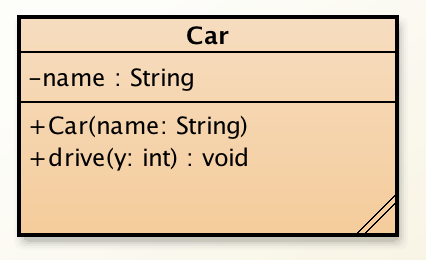
Displaying detail attributes and operations
Attributes and operations in a class diagram represents as signatures as shown in the adjacent image. A sign character ‘-’ represents private publicity which could also be set to ‘+’, ‘#’, or ‘’, respectively, for public, protected, or package visible sharing; the identifier.
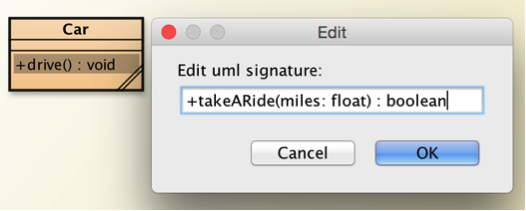
Instate updating source code by editing attributes and operations
To correct the attributes and operations of a classifier, you can simply do it by click them on the class diagram or correct them in the source code, instant changes will be reflect on the source code or the class diagram.

Create/ Remove dependencies
Class relation like association, aggregation and compositions could be declared by a simple drag-and-drop operation(as shown in the adjacent image) or define it in the source code. Relations in a class diagram could be deleted by simply right clicking on it and clicking on remove button.
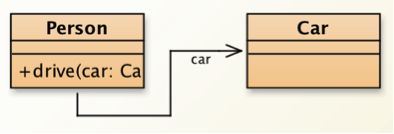
Support directions for dependency
Each dependencies can be set as one-direction or bi-direction in BlueJ-UML. Direction could be indicated in the class diagram as shown in the adjacent image.

Support multiplicities for dependency
BlueJ-UML shows multiplicity of aggregation and composition. For the association, it will be supported in the later version.

Support roles for dependencies
BlueJ-UML detects every variable in source code and look up whether it relates to a dependency to be carried as role displaying in Class Diagram.
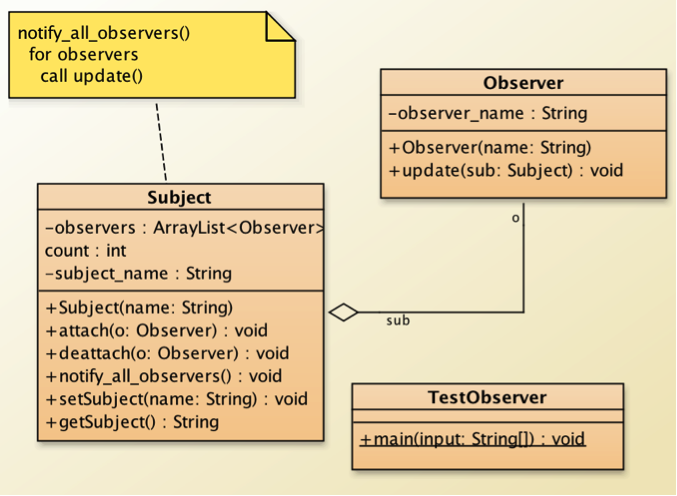
Comment node
Designing a system always involves abstract ideas and they cannot be documented in a Class Diagram. BlueJ-UML provides comment node added into Class Diagram as free text area for docummenting those idea.
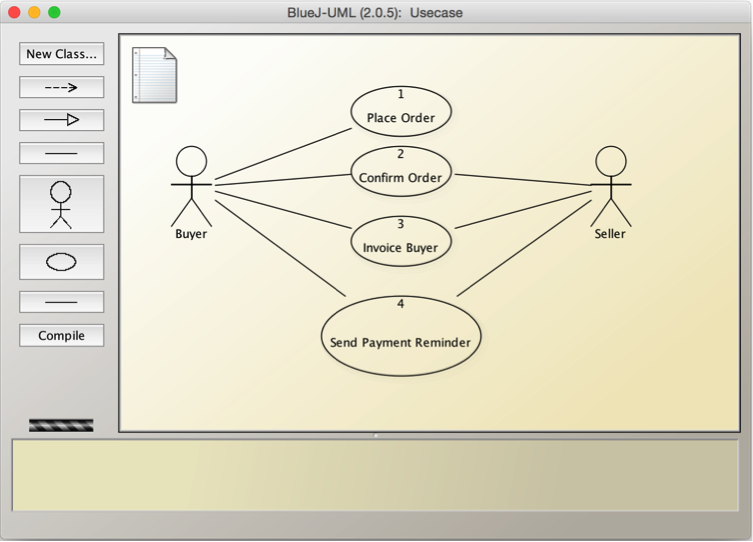
Use case diagram
Fundemental elements for Use-Case diagram (i.e actor, use-case and interaction) are supported in BlueJ-UML. User can optionally enable the Use-Case Diagram drawing tools and draw simple Use-Case Diagram in BlueJ-UML.